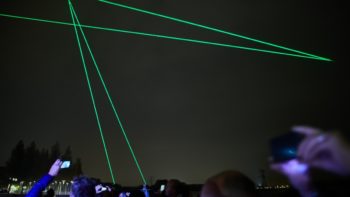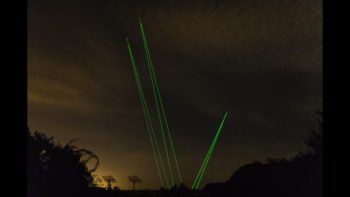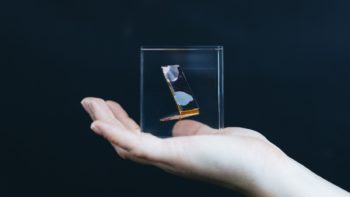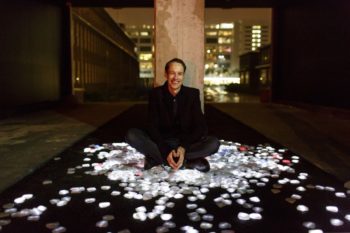“Space waste is the smog of our universe,” explains Dutch artist and innovator Daan Roosegaarde.
Studio Roosegaarde, located in Almere, The Netherlands, has initiated a new, two phase large-scale project: Space Waste Lab.
Viewing the issue
Phase 1 starts with a unique large outdoor Space Waste Lab Performance using LEDs and real-time tracking information to visualize orbital debris circling Earth.
Special designed software and camera technology developed in the last year enables the Space Waste Lab Performance to work, in compliance with strict safety and aviation regulations. The vertical lines of lights highlight space waste crossing above the heads of viewers.
To enhance the sky watching visual experience, the surrounding environment is darkened by shutting down streetlights and commercial signs. An indoor exhibition consists of a real piece of space waste accompanied by an education program.
Phase 2 is a multi-year program to capture space waste and “upcycle” it into sustainable products.
Technologists and artists
The living lab is supported by European Space Agency (ESA) space experts to create a new perspective on space waste.
Explains ESA’s Franco Ongaro, Director of Technology, Engineering and Quality (D/TEC), and Head of ESTEC in Noordwijk, the Netherlands. “I’m a strong believer in cooperation between technologists and artists. We believe in what we do as a service to society, but we are often unable to communicate its worth effectively enough.”
Artists not only communicate vision and feelings to the public, Ongaro says. “This cooperation is all the more important when dealing with issues like space debris, which may one day impact our future, and our ability to draw maximum benefits from space. We need to speak in different ways, to convey not just the dry technological aspects aspect of technology, but the emotions involved in the struggle to preserve this environment for future generations.”
Source material
As noted by the Space Waste Lab, there are more than 29.000 objects larger than 10 centimeters circuiting the Earth. “It is space waste; parts of broken rockets and satellites. This waste can damage our current satellites, with collisions creating more space waste and disturbing our digital communications.”
Artist Roosegaarde adds: “We need to look at space in a better way. What is space waste, how can we fix it, and what is its potential? Can we use space waste as a source material to 3D print houses on the Moon, or use it to create artificial falling stars opposed to polluting fireworks?”
Clean space
The Space Waste Lab is a part of Roosegaarde’s larger vision for “Schoonheid,” a Dutch word meaning both beauty and cleanliness, as in clean space, clean air, clean water, and clean energy.
From early October until mid-January 2018, the Space Waste Lab can be visited.
The live Space Waste Lab Performance can be viewed this year after sunset on November 10, December 7, 8 and January 18, 19 of next year.
For more information on this innovative look at orbital debris, go to:
https://www.studioroosegaarde.net/project/spacewaste-lab
Go to this informative video at:
https://www.facebook.com/DaanRoosegaarde/videos/1074871129342531/?t=39





